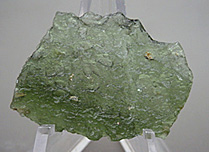
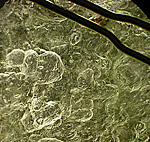
Moldavite is a transparent to translucent olive to bottle green variety of tektite, first found in 1787 at the Moldau River in Czechoslovakia. In general, tektites are natural glasses which are thought to have been created by melting of silica sand or rock by meteoric impact. A popular idea is that the melted material then was flung into the air and cooled into glass as it landed over the area of the impact site. It has also been suggested that they may be of extra-terrestrial origin and that they melted into their glassy state due to high temperatures generated during travel through the Earth's atmosphere.


Iron is the coloring agent responsible for the green color which is diagnostic of Moldavite. Brown, black and yellow tektites are found in other locales. Typical inclusions are bubbles and swirls. The most common cuts that are seen are simple round or emerald facet cuts and occasionally small cabochons. The rough is often available in flattened disc-like or dish-like pieces with very rough edges, that seem to support the melt-splash formation hypothesis. Such pieces are sometimes carved into fanciful shapes and can be very lovely.
There have been occasional reports of simulated Moldavite (man-made glass), but those pieces that I've seen are quite obvious, as they are the intense color of old "7UP" bottles rather than the much more muted green of the natural material. As all glasses are, Moldavite is a rather fragile gemstone and should treated with care and restricted to use in jewelry that doesn't receive hard wear.
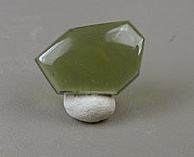
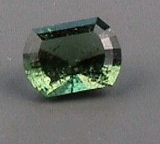

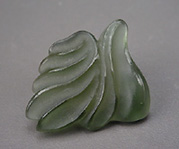
Moldavite is cut primarily as a curiosity, and for collectors, although the recent interest in metaphysical properties of stones has substantially boosted its popularity and availability. Poorly cut and polished stones look very dull next to custom cut and polished specimens which are well worth their higher prices which are still quite modest as collector gems go.